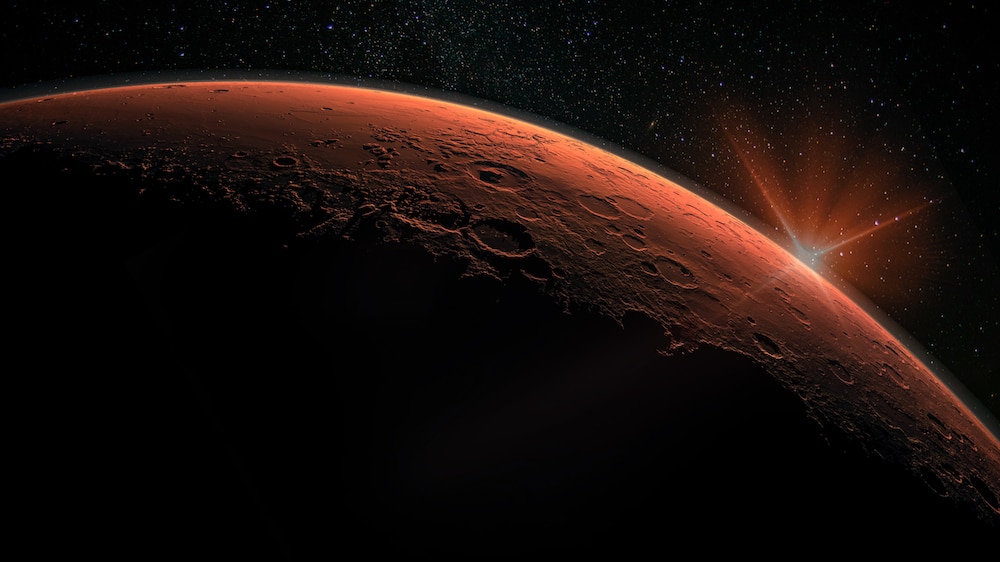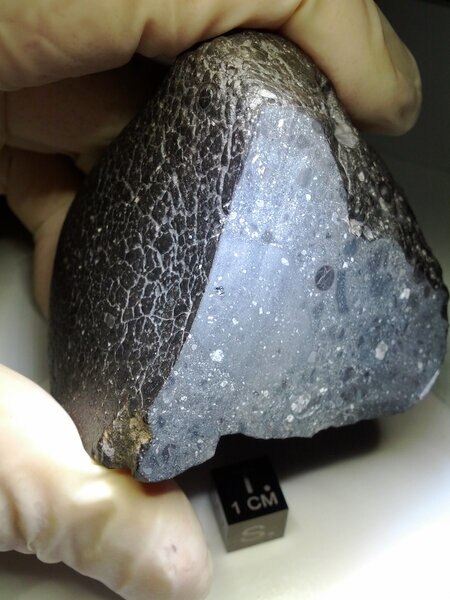Create a free profile to get unlimited access to exclusive videos, sweepstakes, and more!
Is this meteorite exposing the gnarliest bruise Mars ever suffered?
It could mean there was no possibility of life for at least a billion more years than we thought.

You can tell Mars has had it rough. Besides having lost its magnetic field and enduring billions of years of radiation bombing, it has also been gobsmacked by asteroids.
Some 4.45 billion years ago, a space rock crashed into the face of Mars with enough force to trigger a mass extinction. At least that kind of force could easily obliterate most life-forms on our planet. Somehow, a zircon from the offending asteroid was left behind and later stuck to another that fell to Mars around 10 million years ago and was then flung back into space through the power of the impact. A piece of that later asteroid made it through Earth’s atmosphere. Known as “Black Beauty”, it had been hiding a dark secret that was less beauty and more beast.
Researchers Aaron Cavosie and Morgan Cox of Curtin University in Australia, along with their research team, have now found the zircon and revealed that it is the first zircon from Mars with evidence of high-pressure shock deformation — the impact shock from whatever it broke off of was that intense. Their findings were recently published in Science Advances. It is now thought that if there was life on the Red Planet, it couldn’t have even emerged until at least a billion years after the violent encounter with the asteroid that left behind the zircon.
“The shocked zircon we found is the only zircon analyzed from Black Beauty that records shock damage,” Cavosie told SYFY WIRE. "This means that the high-intensity shock damage is from an impact event that predates when the material in Black Beauty stuck together on the surface of Mars.”
That was far from the only zircon embedded in the meteorite. However, 66 others betrayed no signs of such a monstrous impact, and other minerals, like feldspar and pyroxine, only have scars from low-intensity damage (if you can call any asteroid collision that). It became obvious to the researchers that the shocked zircon was not from the parent of Black Beauty, but from a much more ancient impact that must have rocked the planet. The zircon probably came from a larger zircon shard that had to have been decimated when its parent blasted Mars.
Shock deformation occurs when there is so much shock from an impact that it deforms the material hitting or taking the hit. Evident in the zircon was also a phenomenon known as crystal twinning, which happens at extremely high pressures. Fragments of crystal found in all the largest impact sites on Earth, including the crater left by the asteroid that brought the dinosaurs to an end, has showed signs of twinning. Cavosie and his team needed scanning electron microscopy (SEM) using the electron backscatter diffraction method (EBSD) to see this.
"Twins form when high-pressure shockwaves pass through rocks and compress crystals to unimaginable pressures,” he said. “Reorganization of atoms creates a new crystal lattice that is connected to the main crystal. They are microscopic features not visible with other common SEM methods. “
In EBSD, the specimen is zapped with a beam of electrons so their diffraction patterns, or the way the electrons scatter, can be seen. As the beam scanned the main crystal, diffraction patterns revealed which parts of the main crystal had been under so much pressure that they grew in a different direction. This could give us an idea what it was like on Mars over 4 billion years ago. The only thing known for sure so far is that nobody knew impacts on Mars happened so early until the zircon surfaced, so some hypotheses about early Mars are about to change.
The mysterious zircon has brought up more unknowns. While the impact that brought the zircon to Mars seems beastly, it could have happened any time after the zircon formed 4.45 billion years ago, and the zircon could have also formed anywhere. But 4.5 billion years is the earliest that the collision could have occurred. It might have not even been on Mars. For all we know, maybe the zircon formed on another planet or moon or asteroid and was picked up when Black Beauty’s parent smashed into that. How huge the impact was can only be guessed at for now.
“We don’t know the precise age of the impact, its size, or where it occurred,” said Cavosie. “These are all open questions that clearly have relevance to surface conditions and dynamic processes on early Mars that now need to be better understood.”



























